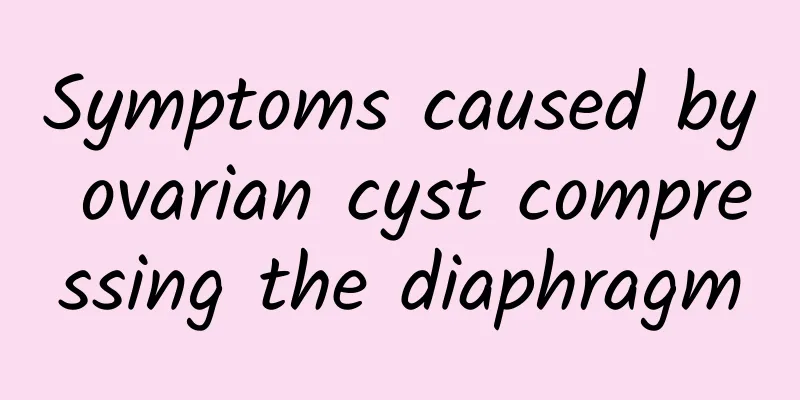Symptoms caused by ovarian cyst compressing the diaphragm

|
As ovarian cysts continue to grow and compress the diaphragm, patients may experience abdominal discomfort, difficulty breathing, lower limb edema, bladder, and other symptoms. Patients with ovarian cysts and large amounts of ascites may also experience such compression symptoms. Abdominal discomfort The weight of the ovarian cyst itself, as well as the influence of intestinal peristalsis and changes in body position, cause the ovarian cyst to move in the pelvic cavity, involving its pedicle and pelvic funnel ligament, so that the patient has a feeling of distension and heaviness in the lower abdomen or iliac fossa. When the cyst compresses the gastrointestinal tract, symptoms such as upper abdominal discomfort and loss of appetite may occur. trouble breathing Ovarian cysts gradually increase in size and can press upward on the diaphragm, resulting in limited diaphragmatic movement. The lungs cannot fully expand when the patient inhales, causing dyspnea. Some ovarian tumor patients experience dyspnea due to unilateral or bilateral pleural effusion. Such patients often have ascites. A large amount of ascites increases abdominal pressure, elevates the diaphragm, and reduces the lung contraction space, causing dyspnea. Lower limb edema If an ovarian cyst is fixed in the pelvic cavity, it may compress the iliac vein, resulting in poor venous return of the lower limbs, causing edema of one or both lower limbs. When the patient has a large amount of ascites, the intra-abdominal pressure increases, affecting the venous return of the lower limbs and causing edema of the lower limbs. Bladder and rectal compression symptoms When an ovarian cyst compresses the bladder, it can cause symptoms such as frequent urination, difficulty urinating, and urinary retention; if the ovarian cyst is located in the rectouterine pouch, it can compress the rectum and cause a feeling of falling or difficulty in defecation. |
<<: What should patients with uterine fibroids not eat?
>>: Foods that are beneficial for patients with vulvar leukoplakia
Recommend
What are the key points to prevent endometrial tuberculosis
The private parts also need daily care. When clea...
5 steps to say goodbye to big butt with home butt massage
Have you ever calculated how much time you spend ...
What are the symptoms of congenital absence of vagina?
The biggest and most important difference between...
What can I drink to inhibit the growth of uterine fibroids? What can I drink to eliminate uterine fibroids?
What can I drink to inhibit the growth of uterine...
What are the examination methods for cervical warts?
When people find cervical warts in the early stag...
How to treat vaginitis
How to treat vaginitis? Vaginitis is a common gyn...
Healthy diet tips for patients with Bartholinitis
What should patients with Bartholinitis pay atten...
Relationship between hyperprolactinemia and infertility
Hyperprolactinemia refers to the level of prolact...
Does ovarian cyst require surgery? What are the treatments?
Is surgery necessary for ovarian cysts? What are ...
Nutritionists break weight loss myths with 5 tips to help you lose weight successfully and stop being fat
This article is excerpted from a creative enterpr...
Winter black rice weight loss method, cook porridge and make tea to lose weight
Black rice is a great product for weight loss and...
Explain to you the treatment measures for cervical erosion
Cervical erosion is a very common disease, and th...
Expert Answer: Is vaginitis contagious?
As for the transmission of vaginitis, we know tha...
How to eat to avoid sarcopenia? Nutritionist: Take four doses to supplement vitamin D and high-quality protein
In recent years, Taiwan's aging trend due to ...
What are the symptoms of premature ovarian failure in women?
What are the symptoms of premature ovarian failur...


![[Video version] It’s easier to gain weight as you get older! Increase your basal metabolic rate with these 5 foods](/upload/images/67dcfc188e496.webp)






